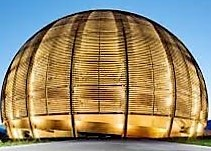Speaker
Description
The short-lived radionuclides (SLRs) have a half-life ≤ 100 Myr. The excess abundance of their daughter nuclides in various meteoritic phases confirms the existence of SLRs in the early solar system (ESS). In this work, we have developed Galactic chemical evolution (GCE) models to understand the stellar sources of SLRs, $^{26}$Al, $^{36}$Cl, $^{41}$Ca, $^{53}$Mn, and $^{60}$Fe in the ESS. In these models, the solar neighborhood (8-10 kpc from the galactic center) is divided into spatial grids of area, 0.1-1 kpc$^{2}$. Each grid area evolves over the galactic timescale distinctly in terms of nucleosynthetic contributions of various generations of stars.
In our simulations, the solar system forms inside a stellar cluster and has canonical values of $^{60}$Fe/$^{56}$Fe and $^{53}$Mn/$^{55}$Mn in the ESS. We have also proposed a possible scenario to explain the observed abundance of $^{26}$Al/$^{27}$Al and $^{41}$Ca/$^{40}$Ca in the ESS. In addition, the results of the temporal and spatial evolution of abundance trends of SLRs in the galaxy from 2-18 kpc will be presented.




